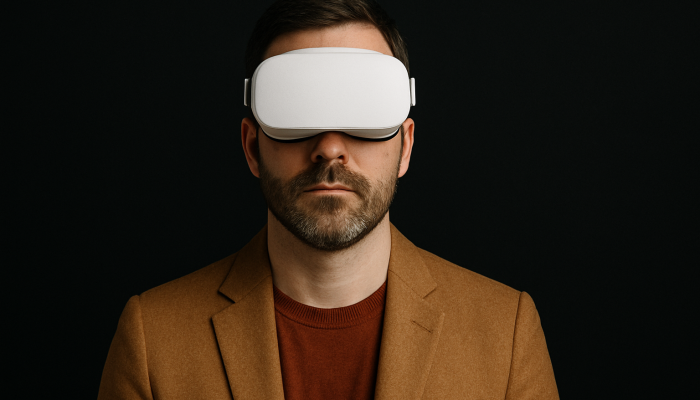XR Testing for Healthcare Apps: Key Challenges & Fixes
Common XR QA Hurdles in Healthcare Apps
As immersive technologies like XR (Extended Reality), VR (Virtual Reality), AR (Augmented Reality), and MR (Mixed Reality) become more prevalent in healthcare, the need for rigorous QA (Quality Assurance) testing has never been more critical. XR testing in healthcare is fundamentally different from gaming or enterprise use cases because it deals with human lives, precision, compliance, and trust. In this blog, we explore the unique challenges and responsibilities that come with XR QA in the medical field and why specialized testing is non-negotiable.

XR Healthcare : The Rise of XR in Healthcare
The healthcare industry is increasingly integrating XR solutions across areas like:
- VR surgical simulations for doctor training
- AR overlays for diagnostic assistance
- MR applications for patient education
- Telepresence and remote collaboration in surgeries or diagnoses
These solutions offer immersive learning, better retention, and more interactive experiences. However, any technological failure or bug in such scenarios can lead to severe real-world consequences.
XR in Healthcare : Why Healthcare XR Testing Is Different
1 . Immersive Environments Require Realistic Simulation
Healthcare XR isn’t just desktop software—it’s immersive and interactive.
- VR sessions may simulate surgeries or emergency scenarios that fully immerse the user in a digital world
- AR overlays medical visuals on actual patients or medical equipment
- MR combines both, enabling digital models to interact with the real world
Testing these systems means reproducing realistic clinical settings. Lighting, room layout, equipment positioning, and even ambient noise can affect tracking, gesture detection, and user behavior. It’s not enough to test in a quiet office—tests must reflect the environments where healthcare apps are used.
2. Human-Centric Interactions: Comfort, Usability, and Accessibility
Users of healthcare XR span patients, surgeons, nurses, and trainees. They vary widely in:
- Age
- Tech familiarity
- Physical mobility
- Cognitive load capacity
Testing must focus on comfort—avoiding dizziness, nausea, or eye strain—and accessibility. Elderly users, people with disabilities, or those colored outside the tech-savvy spectrum may need alternative controls, clear UI, minimal latency, and intuitive workflows.
3. Accuracy and Precision Are Non-Negotiable
QA teams must ensure pixel-perfect accuracy in anatomical models, tool placements, and time-sensitive procedures. Incorrect interactions, depth misalignments, or tracking issues could ruin training outcomes or diminish the value of simulation.
4. Device-Specific Behavior
Different headsets (Meta Quest, HoloLens, Magic Leap) behave differently. Real-device testing is essential to identify bugs related to:
- Hand tracking
- Gaze interaction
- Controller latency
- Display rendering and motion blur
XR QA for healthcare requires a lab with real hardware for validation
5. Motion Sickness and User Comfort
Many healthcare users are not tech-savvy gamers but doctors, patients, or trainees. Even slight design flaws or performance issues can cause nausea, discomfort, or abandonment of the app. Motion comfort and ergonomics must be tested in real conditions
6. Compliance and Regulatory Testing
Unlike games, healthcare XR apps often need to meet regulations like HIPAA, FDA guidelines, CE certifications, and others. QA must validate not just functional performance, but also data privacy, logging, accessibility, and audit trails.
7. Use Case Complexity
Medical XR apps often simulate complex workflows:
- Multistep procedures
- Interdependent actions
- Real-world medical protocols
These require scenario-based testing, not just unit or regression tests. Exploratory QA and edge-case handling are vital
XR Bugs That Matter in Healthcare
- Misaligned 3D overlays.
- Incorrect audio prompts
- Controller drift during surgery sim.
- Latency in hand tracking during critical task
- UI freezing while viewing patient vitals
- Data loss or incorrect sync in remote surgery
Each bug has a larger impact than in typical apps.
Our Approach at MixedRealityTech
At MixedRealityTech, we’ve tested over 22,000+ hours of XR content across platforms like Meta Quest, HoloLens, and Magic Leap. We specialize in:
- Real-device testing for medical-grade reliability
- Motion and ergonomics validation
- Detailed bug reports with repro steps and videos
- Regulatory test case design
- Simulation fidelity and performance benchmarking
We’ve worked with healthcare leaders like Boston Scientific and Medtronic to ensure their XR experiences are bug-free, user-safe, and compliant.
XR Healthcare : How We Conduct Healthcare XR QA
1.Initial Assessment:
We understand the medical workflow and identify critical flows.
2 .Test Plan Creation:
We design both manual and automated test cases, based on real use scenarios.
3 .Device Lab Testing:
We test on Quest 2/3, HoloLens, Pico, and Magic Leap to identify device-specific issues.
4 .Comfort Testing:
Real testers report on fatigue, dizziness, or breakpoints in the experience.
5 .Bug Reporting:
Each issue is logged with video, logs, device config, and suggested fixes.
6 .Revalidation:
We re-test post-fixes to ensure the release is stable and ready.
Common Challenges We Help Solve
- High user drop-off due to discomfort or confusion
- XR UI not matching surgical flow or timing
- Inconsistent controller interaction.
- Lack of device compliance reporting
- Slow performance on target hardware
We help teams launch with confidence.
Why QA Shouldn’t Be an Afterthought
Many healthcare companies focus heavily on product development and design but treat QA as a last step. In XR, especially in medical use cases, QA should be baked into the process from the start. It ensures:
- Patient and clinician trust
- Faster regulatory approval
- Fewer support tickets post-launch.
- Higher app store ratings and retention
QA saves cost, time, and most importantly, reputation.
Final Thoughts
As XR continues to revolutionize healthcare, from education to diagnostics and therapy, QA becomes the gatekeeper of quality and safety. The unique nature of medical XR demands more than regular app testing. It requires a deep understanding of medical workflows, hardware behavior, and user psychology.
At MixedRealityTech, we’re committed to helping XR healthcare teams build apps that are accurate, reliable, and immersive without bugs.
Interested in seeing how we test?
Reach out for a free 2-week trial on your build and experience the difference.
Contact Us
Fill out the form below and we will
contact you as soon as possible!



